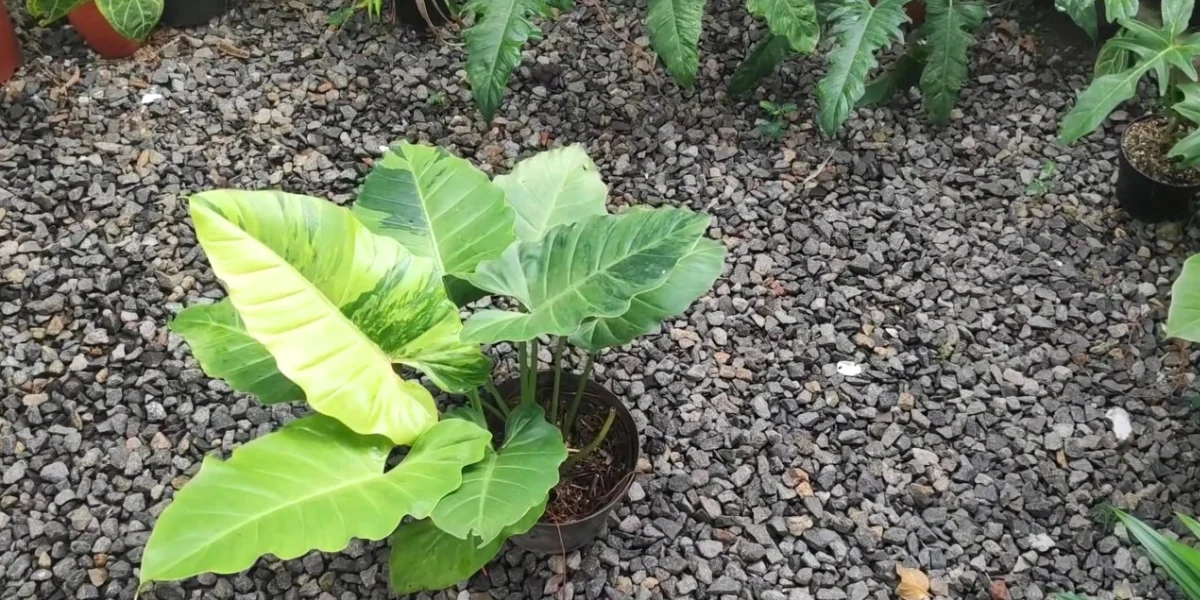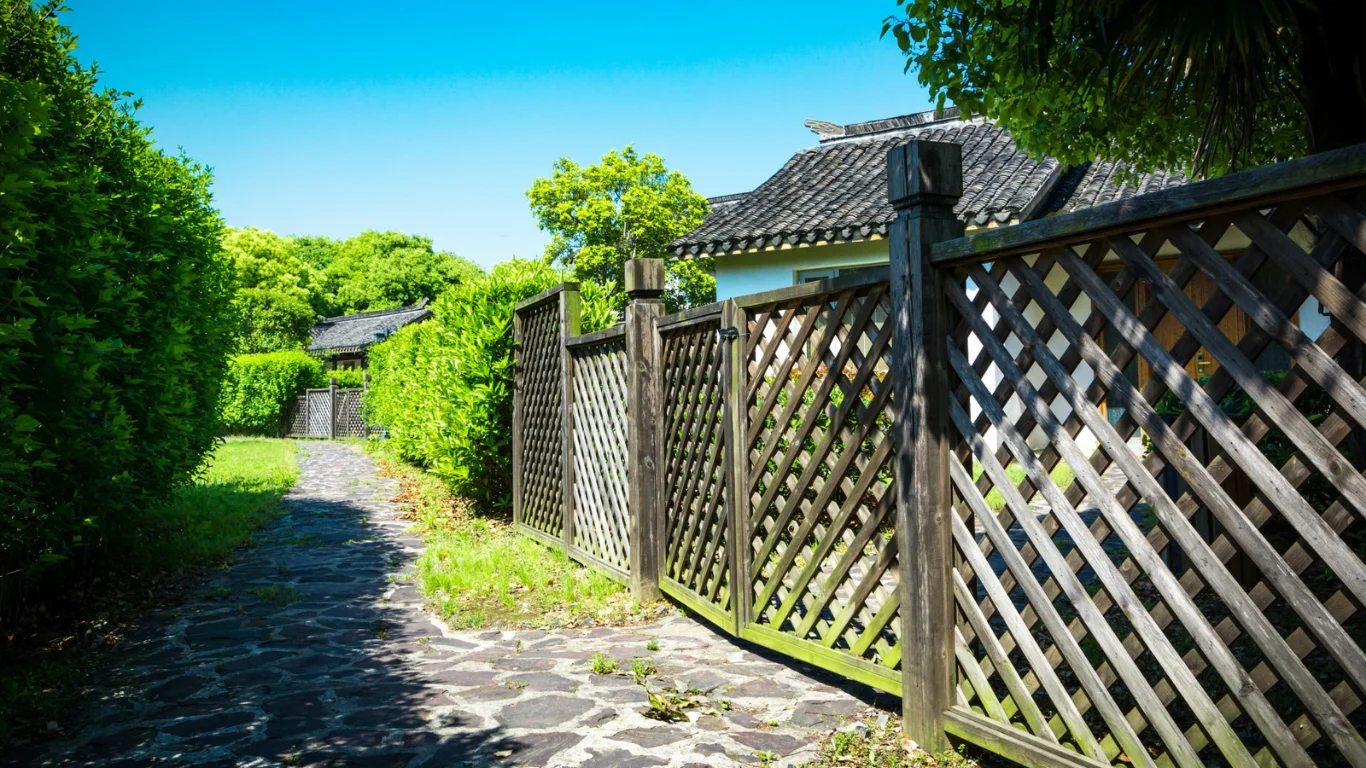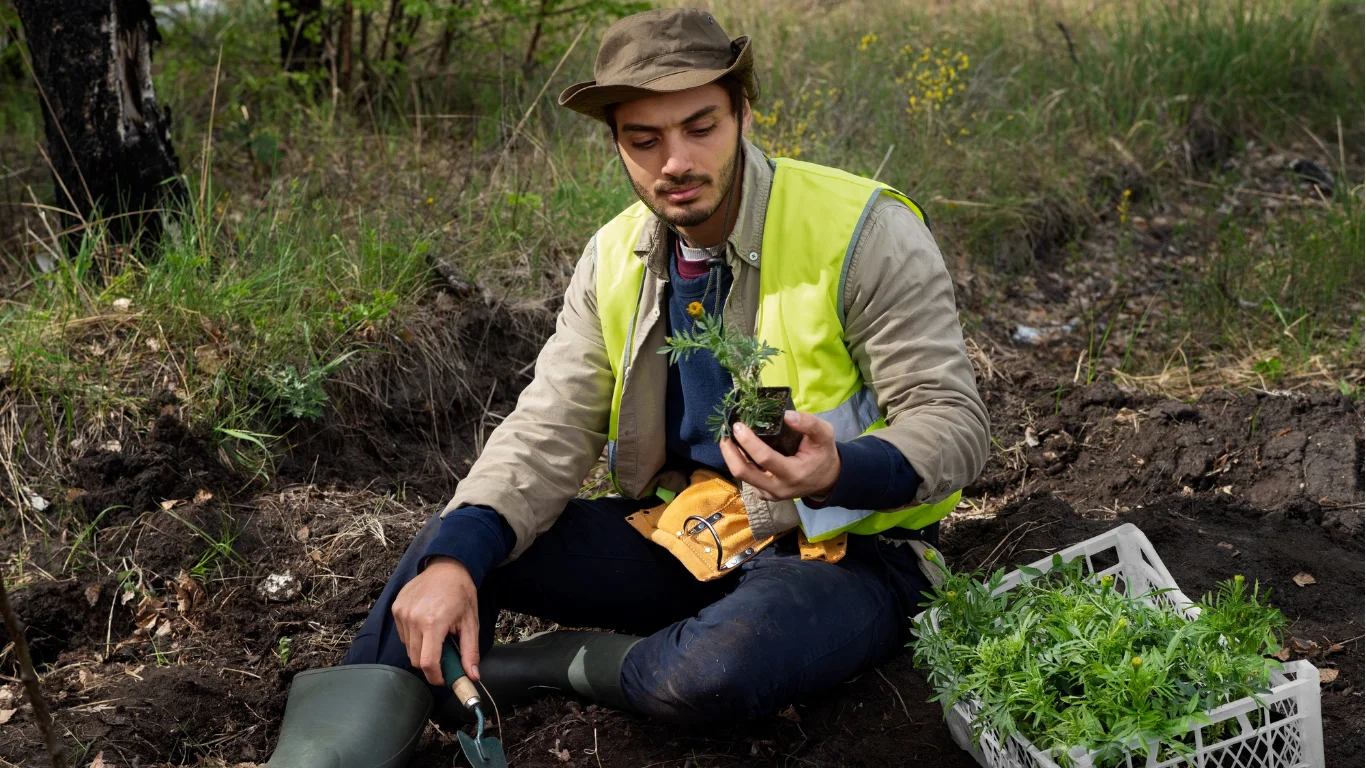Philodendron Snowdrift is a wonderful and versatile plant that is valuable for an easy-to-grow landscape. Popular with house plant enthusiasts, this tropical beauty helps elevate the aesthetics of any space. Its heads feature vibrant green, cream and sometimes yellow philodendrons in large green leaves.
Plant Overview
The Philodendron Snowdrift also known as snowdrift philodendron or snowdrift plant is an eye-catching plant that is usually relatively popular with leaves, each contrasting with patterns of green, cream and white. As an adaptable tropical plant, it usually grows best indoors if grown with proper care.
Philodendron snowdrift is an important member of the Araceae family and is known for its tropical origins and variegated foliage. Its large green leaves make it an attractive plant for collectors and enthusiasts. This plant is ideal for indoor areas, helping to bring the tropics indoors with minimal effort provided care guidelines are followed.
| Scientific Name: | Philodendron Snowdrift |
| Family: | Araceae |
| Origin: | Tropical regions of South America |
| Light: | Bright, Indirect Light |
| Watering: | Moderate watering |
| Growth Rate: | Moderate to fast |
| Mature Size: | Up to 2-3 feet indoors |
| Toxicity: | Toxic to Pets & Humans |
Key Features
- Low Maintenance: It requires minimal maintenance to grow, making it ideal and effective for both beginners and expert gardeners.
- Unique Variegation: Snowdrift philodendron has large leaves with a combination of green, cream, and yellow colors that usually make it popular with people.
- Adaptive Growth: This plant thrives in a variety of indoor settings that adapt to varying levels of light and humidity.
How to Care
Philodendron snowdrift requires proper care to keep it diverse, healthy and thriving.
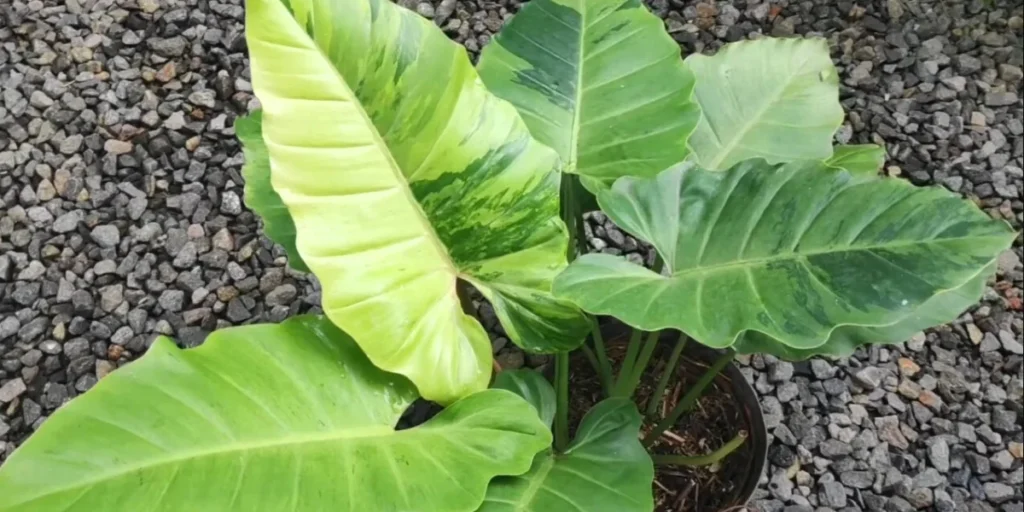
Temperature
Philodendron snowdrift grows best and efficiently in warm tropical climates. Grows best within a constant indoor temperature between 65-80°F.
Water
Water Snowdrift Philodendron when the top inch of soil is dry, but do not let it dry out completely.
Soil
A well-drained, nutrient-rich potting mix is ideal, which should be a mixture of peat, perlite and compost, and these are the things the plant needs to retain moisture.
Fertilizer
It should be fertilized regularly every 3 weeks during the growing season for optimal growth. It should be watered optimally and according to the adjustment, adding fertilizer mixed with water gives a unique and satisfying boost to its growth and health.
Humidity
This tropical plant thrives best in high humidity levels of 60-80%. You must always maintain its humidity. If your house is in a place where there are strong winds, you must protect it from the winds and use a humidifier to maintain the humidity in order to maintain the humidity in the best possible way.
Light
Philodendron Snowdrift always prefers indirect sunlight and grows best in it, but you should remember that if you give your plant direct sunlight, it will be dangerous for it which can burn its leaves and can adversely affect the health of the plant. So place it around your window or door and ensure indirect sunlight. It can tolerate a low light but in low light the growth of the plant slows down, the color of the plant also changes.
Flowering
Although it prefers to grow indoors with best growth, it sometimes happens that it starts to produce small flowers but it does not matter because its real attractive beauty shines in its foliage.
Pruning
When you start cutting it, make sure that you have sharp scissors that should be clean. Sterilized shears help protect the plant from various diseases.
Potting and Repotting
After every 1-2 years or when you see that the plant is fully rooted, ensure a well-drained pot and it should be placed there with nutrient rich soil.
Ideal Placement and Maintenance
Place your Snowdrift Plant in a location that receives indirect sunlight to effectively increase its health and growth. The leaves should be washed regularly to ensure photosynthesis.
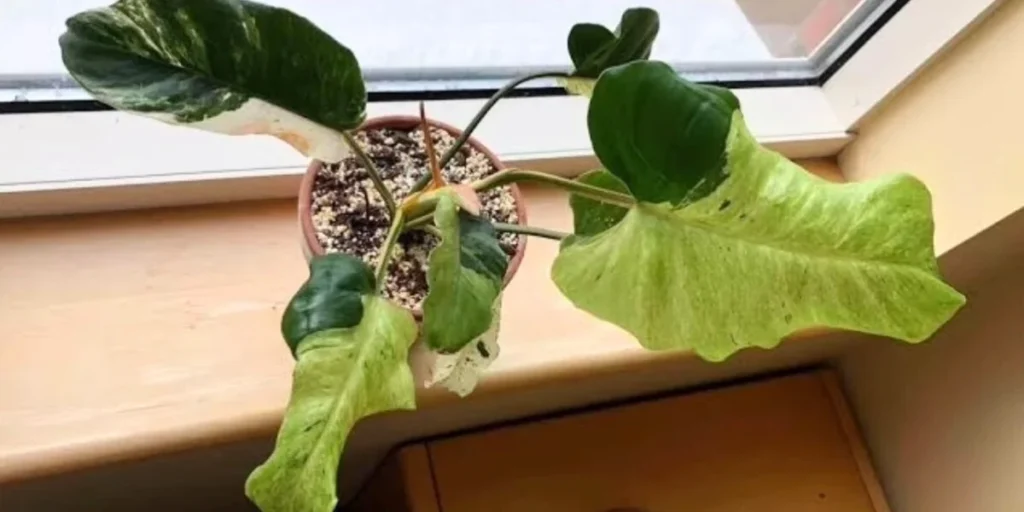
People also visit to care for Delphiniums
Propagation
Philodendron snowdrifts are relatively straightforward to propagate and can easily be propagated by stem cuttings. We have described the complete method here to help you:
- Cut a Healthy Stem: At least you should choose a stem with two leaves and cut it clean and clear below the leaf node with a pair of scissors.
- Root in Water or Soil: You should place the cuttings in a potting mix with water or moist, well-drained soil.
- Waiting for Roots to Grow: Roots will begin to develop within a few weeks after you pot the cutting into a well-draining pot.
People also read about Philodendron Florida Ghost
Common Pests and Diseases
Philodendron Snowdrift is susceptible to common indoor pests which we have detailed here:
- Spider Mites: Small, red mites that cause leaves to turn yellow. To get rid of them you have to use neem oil or insecticidal soap and treat with it.
- Mealybugs: There are some bugs that are like cotton and rubbing alcohol is recommended to eliminate them.
- Aphids: Some insects are green or black in color that suck the sap on or inside the leaves of these plants and continue to kill and damage the plant. They are treated with water sprays, insecticide sprays and eliminated with neem oil.
Problems, Causes and Solutions
| Problem | Cause | Solution |
| Yellowing Leaves | Over-water | Reduce watering & check soil drainage |
| Brown Leaf Tips | Low humidity | Increase humidity with a humidifier |
| Faded Variegation | Low light | Move to a bright, indirect light |
Toxicity
The Philodendron Snowdrift is dangerous to household pets and humans. It contains calcium oxalate crystals, which when eaten cause irritation or inflammation that is usually dangerous. Therefore, keep this plant away from children and animals or prevent animals from going around them so as not to create any kind of dangerous situation.
Conclusion
Philodendron Snowdrift is a great choice for anyone looking to add a touch of the tropics to their indoor garden. Low maintenance is required to grow this unique plant that can easily be enhanced by excellent growth and brighten up your garden beautifully. It needs fertilizer in spring and summer to grow and thrive successfully.
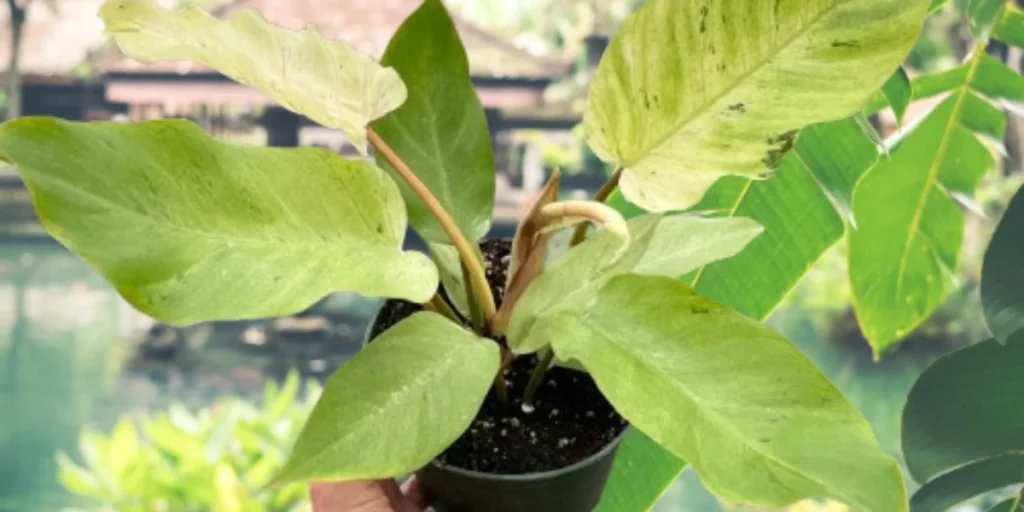
By adopting all the tips we have given in this article, you can grow and propagate your philodendron snowdrift with excellent growth.
People also read about Philodendron White Wizard
FAQs
Resume the watering schedule when you notice that the top 1/2 inch of soil has completely dried out. It usually happens in 3 to 5 days in summer and in 7 to 9 days in winter the part is dry but you have to check it regularly and take care as per adjustment.
Yes, it is characterized by low light tolerance through its adaptation but you should try to provide it with indirect sunlight as this will be the best choice for its growth which will also have a unique effect on its health.
Yes, it is toxic to pets, especially domestic dogs and cats, but you should keep it out of the reach of any animals or children. It contains toxic minerals that can cause harm.
Its leaves turn yellow when the amount of water is given too much or the amount of water is reduced too much. Its leaves are usually yellow due to too much fertilizer or direct sunlight. However, it states that if the leaves of your plant start to turn yellow, it indicates that something is missing or something is wrong in feeding it.
Note: When the leaves start to turn yellow, you should not fertilize at all, water should be reduced.
